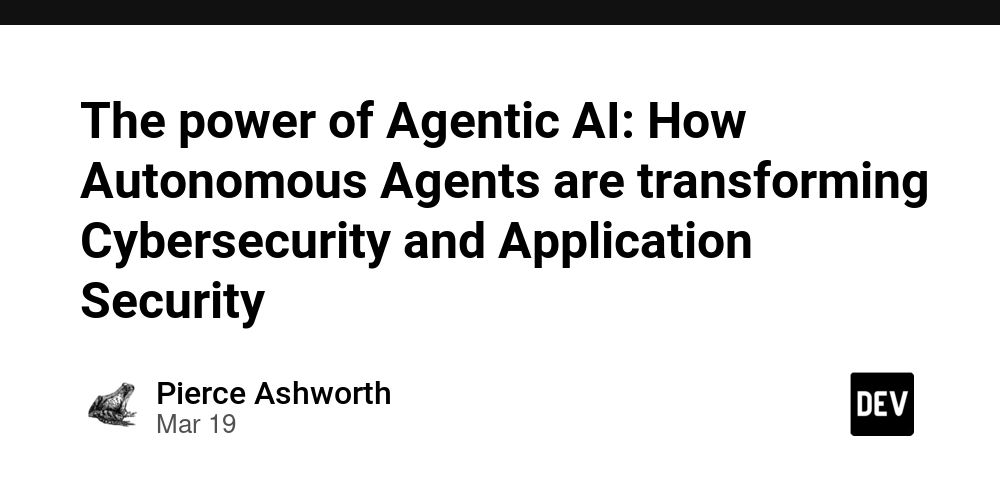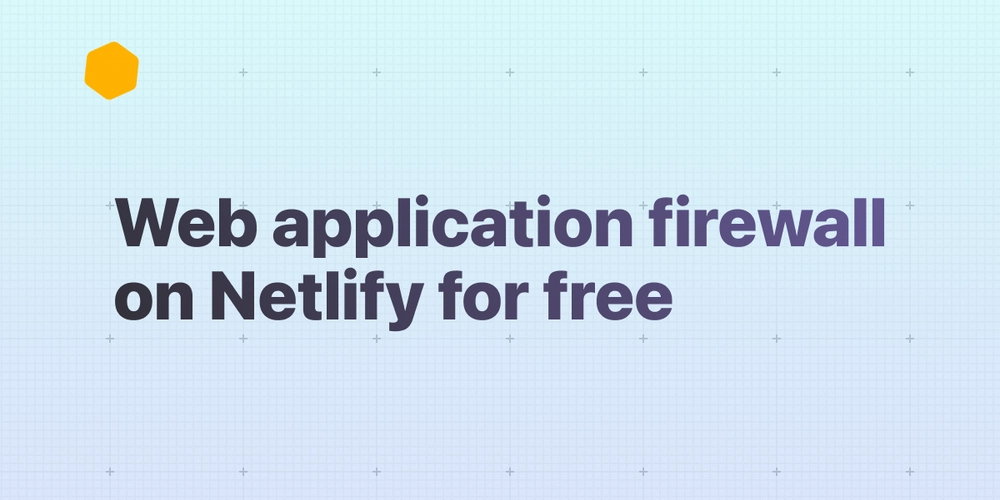The power of Agentic AI: How Autonomous Agents are transforming Cybersecurity and Application Security
Introduction In the rapidly changing world of cybersecurity, as threats are becoming more sophisticated every day, businesses are relying on Artificial Intelligence (AI) to strengthen their security. While AI is a component of cybersecurity tools since the beginning of time however, the rise of agentic AI can signal a revolution in active, adaptable, and connected security products. This article focuses on the revolutionary potential of AI, focusing on the applications it can have in application security (AppSec) and the pioneering concept of automatic security fixing. Cybersecurity is the rise of agentic AI Agentic AI refers specifically to self-contained, goal-oriented systems which understand their environment to make decisions and make decisions to accomplish certain goals. In contrast to traditional rules-based and reactive AI, agentic AI machines are able to learn, adapt, and operate in a state of autonomy. For cybersecurity, the autonomy is translated into AI agents that are able to continuously monitor networks, detect suspicious behavior, and address threats in real-time, without continuous human intervention. The potential of agentic AI in cybersecurity is vast. Intelligent agents are able to recognize patterns and correlatives through machine-learning algorithms and huge amounts of information. These intelligent agents can sort through the chaos generated by a multitude of security incidents prioritizing the most important and providing insights that can help in rapid reaction. Agentic AI systems can be trained to improve and learn their abilities to detect security threats and being able to adapt themselves to cybercriminals and their ever-changing tactics. Agentic AI as well as Application Security Agentic AI is an effective instrument that is used in a wide range of areas related to cybersecurity. But the effect its application-level security is noteworthy. Security of applications is an important concern for businesses that are reliant increasingly on interconnected, complex software platforms. AppSec techniques such as periodic vulnerability testing and manual code review do not always keep up with current application cycle of development. The answer is Agentic AI. By integrating intelligent agents into the lifecycle of software development (SDLC) businesses are able to transform their AppSec methods from reactive to proactive. AI-powered agents are able to constantly monitor the code repository and analyze each commit for potential security flaws. They are able to leverage sophisticated techniques including static code analysis dynamic testing, and machine-learning to detect a wide range of issues including common mistakes in coding to little-known injection flaws. What separates agentic AI distinct from other AIs in the AppSec sector is its ability to understand and adapt to the particular context of each application. Agentic AI has the ability to create an extensive understanding of application design, data flow and attack paths by building an exhaustive CPG (code property graph) which is a detailed representation that captures the relationships between the code components. The AI can identify vulnerabilities according to their impact in actual life, as well as how they could be exploited in lieu of basing its decision on a standard severity score. Artificial Intelligence-powered Automatic Fixing the Power of AI One of the greatest applications of AI that is agentic AI in AppSec is automating vulnerability correction. In the past, when a security flaw is discovered, it's on human programmers to review the code, understand the issue, and implement fix. It could take a considerable time, can be prone to error and hold up the installation of vital security patches. Through this article , the game is changed. AI agents can find and correct vulnerabilities in a matter of minutes by leveraging CPG's deep experience with the codebase. The intelligent agents will analyze the code that is causing the issue to understand the function that is intended and then design a fix that fixes the security flaw while not introducing bugs, or affecting existing functions. The implications of AI-powered automatized fixing are huge. It is estimated that the time between the moment of identifying a vulnerability and fixing the problem can be significantly reduced, closing the possibility of the attackers. It will ease the burden for development teams and allow them to concentrate in the development of new features rather and wasting their time fixing security issues. In addition, by automatizing fixing processes, organisations can ensure a consistent and reliable process for vulnerability remediation, reducing the possibility of human mistakes and errors. The Challenges and the Considerations While the potential of agentic AI in cybersecurity as well as AppSec is huge It is crucial to acknowledge the challenges and issues that arise with its use. It is important to consider accountabil

Introduction
In the rapidly changing world of cybersecurity, as threats are becoming more sophisticated every day, businesses are relying on Artificial Intelligence (AI) to strengthen their security. While AI is a component of cybersecurity tools since the beginning of time however, the rise of agentic AI can signal a revolution in active, adaptable, and connected security products. This article focuses on the revolutionary potential of AI, focusing on the applications it can have in application security (AppSec) and the pioneering concept of automatic security fixing.
Cybersecurity is the rise of agentic AI
Agentic AI refers specifically to self-contained, goal-oriented systems which understand their environment to make decisions and make decisions to accomplish certain goals. In contrast to traditional rules-based and reactive AI, agentic AI machines are able to learn, adapt, and operate in a state of autonomy. For cybersecurity, the autonomy is translated into AI agents that are able to continuously monitor networks, detect suspicious behavior, and address threats in real-time, without continuous human intervention.
The potential of agentic AI in cybersecurity is vast. Intelligent agents are able to recognize patterns and correlatives through machine-learning algorithms and huge amounts of information. These intelligent agents can sort through the chaos generated by a multitude of security incidents prioritizing the most important and providing insights that can help in rapid reaction. Agentic AI systems can be trained to improve and learn their abilities to detect security threats and being able to adapt themselves to cybercriminals and their ever-changing tactics.
Agentic AI as well as Application Security
Agentic AI is an effective instrument that is used in a wide range of areas related to cybersecurity. But the effect its application-level security is noteworthy. Security of applications is an important concern for businesses that are reliant increasingly on interconnected, complex software platforms. AppSec techniques such as periodic vulnerability testing and manual code review do not always keep up with current application cycle of development.
The answer is Agentic AI. By integrating intelligent agents into the lifecycle of software development (SDLC) businesses are able to transform their AppSec methods from reactive to proactive. AI-powered agents are able to constantly monitor the code repository and analyze each commit for potential security flaws. They are able to leverage sophisticated techniques including static code analysis dynamic testing, and machine-learning to detect a wide range of issues including common mistakes in coding to little-known injection flaws.
What separates agentic AI distinct from other AIs in the AppSec sector is its ability to understand and adapt to the particular context of each application. Agentic AI has the ability to create an extensive understanding of application design, data flow and attack paths by building an exhaustive CPG (code property graph) which is a detailed representation that captures the relationships between the code components. The AI can identify vulnerabilities according to their impact in actual life, as well as how they could be exploited in lieu of basing its decision on a standard severity score.
Artificial Intelligence-powered Automatic Fixing the Power of AI
One of the greatest applications of AI that is agentic AI in AppSec is automating vulnerability correction. In the past, when a security flaw is discovered, it's on human programmers to review the code, understand the issue, and implement fix. It could take a considerable time, can be prone to error and hold up the installation of vital security patches.
Through this article , the game is changed. AI agents can find and correct vulnerabilities in a matter of minutes by leveraging CPG's deep experience with the codebase. The intelligent agents will analyze the code that is causing the issue to understand the function that is intended and then design a fix that fixes the security flaw while not introducing bugs, or affecting existing functions.
The implications of AI-powered automatized fixing are huge. It is estimated that the time between the moment of identifying a vulnerability and fixing the problem can be significantly reduced, closing the possibility of the attackers. It will ease the burden for development teams and allow them to concentrate in the development of new features rather and wasting their time fixing security issues. In addition, by automatizing fixing processes, organisations can ensure a consistent and reliable process for vulnerability remediation, reducing the possibility of human mistakes and errors.
The Challenges and the Considerations
While the potential of agentic AI in cybersecurity as well as AppSec is huge It is crucial to acknowledge the challenges and issues that arise with its use. It is important to consider accountability and trust is an essential issue. Organisations need to establish clear guidelines to ensure that AI acts within acceptable boundaries when AI agents grow autonomous and are able to take decision on their own. It is vital to have robust testing and validating processes to ensure properness and safety of AI created corrections.
Another issue is the possibility of adversarial attacks against the AI system itself. Hackers could attempt to modify data or take advantage of AI weakness in models since agents of AI models are increasingly used within cyber security. It is essential to employ secure AI methods like adversarial and hardening models.
Quality and comprehensiveness of the CPG's code property diagram is also a major factor in the performance of AppSec's AI. Making and maintaining an precise CPG involves a large expenditure in static analysis tools and frameworks for dynamic testing, as well as data integration pipelines. It is also essential that organizations ensure they ensure that their CPGs remain up-to-date to keep up with changes in the security codebase as well as evolving threat landscapes.
Cybersecurity: The future of agentic AI
The future of AI-based agentic intelligence in cybersecurity is exceptionally promising, despite the many obstacles. As AI technologies continue to advance in the near future, we will be able to see more advanced and powerful autonomous systems capable of detecting, responding to, and reduce cyber attacks with incredible speed and precision. Agentic AI inside AppSec has the ability to change the ways software is created and secured which will allow organizations to design more robust and secure apps.
The introduction of AI agentics into the cybersecurity ecosystem can provide exciting opportunities for coordination and collaboration between security processes and tools. Imagine a scenario where the agents operate autonomously and are able to work on network monitoring and response as well as threat security and intelligence. They would share insights as well as coordinate their actions and offer proactive cybersecurity.
It is crucial that businesses take on agentic AI as we progress, while being aware of its moral and social consequences. Through fostering a culture that promotes accountable AI advancement, transparency and accountability, we can use the power of AI to build a more solid and safe digital future.
The conclusion of the article can be summarized as:
Agentic AI is a significant advancement in cybersecurity. It's a revolutionary paradigm for the way we recognize, avoid the spread of cyber-attacks, and reduce their impact. By leveraging the power of autonomous agents, particularly in the realm of the security of applications and automatic patching vulnerabilities, companies are able to transform their security posture in a proactive manner, from manual to automated, and also from being generic to context cognizant.
Agentic AI is not without its challenges but the benefits are far more than we can ignore. As we continue to push the boundaries of AI in cybersecurity and other areas, we must approach this technology with a mindset of continuous adapting, learning and sustainable innovation. By doing so ai security false positives will be able to unlock the potential of AI agentic to secure our digital assets, secure the organizations we work for, and provide an improved security future for everyone.
ai security false positives











































































































































































![[The AI Show Episode 142]: ChatGPT’s New Image Generator, Studio Ghibli Craze and Backlash, Gemini 2.5, OpenAI Academy, 4o Updates, Vibe Marketing & xAI Acquires X](https://www.marketingaiinstitute.com/hubfs/ep%20142%20cover.png)




























































































































![[DEALS] The Premium Learn to Code Certification Bundle (97% off) & Other Deals Up To 98% Off – Offers End Soon!](https://www.javacodegeeks.com/wp-content/uploads/2012/12/jcg-logo.jpg)


![From drop-out to software architect with Jason Lengstorf [Podcast #167]](https://cdn.hashnode.com/res/hashnode/image/upload/v1743796461357/f3d19cd7-e6f5-4d7c-8bfc-eb974bc8da68.png?#)








































































































.png?#)

































_Christophe_Coat_Alamy.jpg?#)
 (1).webp?#)





































































































![Apple Considers Delaying Smart Home Hub Until 2026 [Gurman]](https://www.iclarified.com/images/news/96946/96946/96946-640.jpg)
![iPhone 17 Pro Won't Feature Two-Toned Back [Gurman]](https://www.iclarified.com/images/news/96944/96944/96944-640.jpg)
![Tariffs Threaten Apple's $999 iPhone Price Point in the U.S. [Gurman]](https://www.iclarified.com/images/news/96943/96943/96943-640.jpg)




































































































































